Star of Bethlehem (Ornithogalum umbellatum) is a bulbous flowering plant from the Asparagaceae family. Native to Asia Minor, Europe, and Northern Africa, this plant is widely cultivated for its ornamental value and typically blooms in late spring.
Although admired for its star-shaped white flowers, it is important to note that the Star of Bethlehem is toxic to humans, making it unsuitable for consumption. Additionally, this species is highly invasive, which poses a risk to local ecosystems and requires careful consideration before planting.
| Common name | Star of Bethlehem |
| Botanical name | Ornithogalum umbellatum |
| Family | Asparagaceae |
| Species | umbellatum |
| Origin | Asia minor, Europe, and Northern Africa |
| Life cycle | Bulb |
| Plant type | Bulb |
| Sunlight | Partial Shade |
| Flowering period | Spring |
| Height | 4 in. – 6 in. |
| Flower color | White |
| Leaf color | Green |
| Garden style | Rock Garden |
| Uses | Woodland |
I. Appearance and Characteristics
Ornithogalum umbellatum, the garden star-of-Bethlehem, grass lily, nap-at-noon, or eleven-o’clock lady, a species of the genus Ornithogalum, is a perennial bulbous flowering plant in the asparagus family (Asparagaceae).
It is native throughout most of southern and central Europe, and north-western Africa. O. umbellatum is often grown as a garden ornamental, but in North America and other areas it has escaped cultivation and can be found in many areas, where it may become an invasive noxious weed.
O. umbellatum is a perennial herbaceous bulbous plant (geophyte), dying back after flowering, to an underground storage bulb. The following year, it regrows from the often shallow rooted bulbs, which are ovoid with a membranous coat, 15–25 millimetres (1⁄2–1 inch) long and 18–32 mm (3⁄4–1+1⁄4 in) in diameter.
The bulbs form multiple leaf-bearing bulbils that soon separate but remain close by. Initially the plant forms 6–10 basal leaves, that arise in tufts from the bulbs. The leaves are grooved (canaliculate), smooth (glabrous) and linear with a white to light green linear midrib on the upper surface, and grow up to 30 centimetres (12 in) long and 8 mm (1⁄4 in) broad.
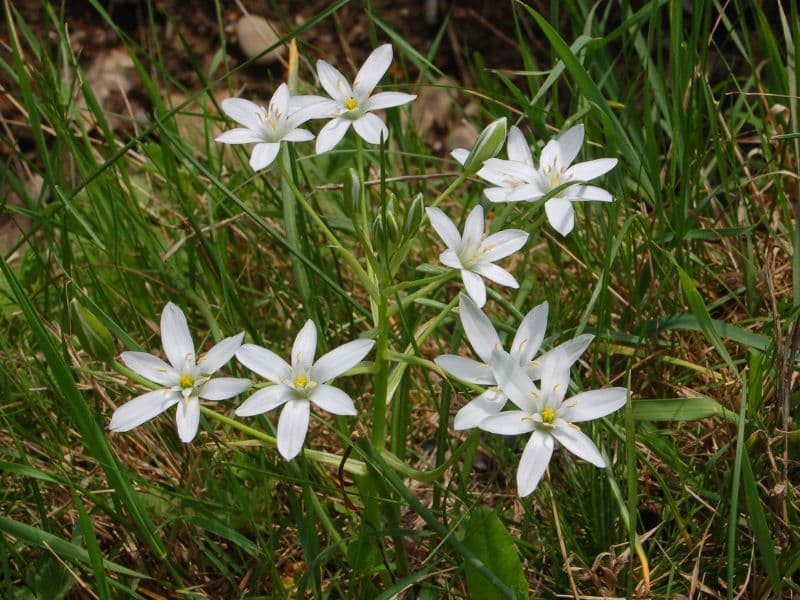
O. umbellatum is scapose, with a glabrous flower stem (scape) that emerges from the leaf tufts later and is about 10–30 cm (4–12 in) in height, tapering at its tip.
The inflorescence bears 6–20 flat star shaped flowers on ascending stems (pedicels), 3–3.5 cm (1+1⁄4–1+1⁄2 in), associated with membranaceous leaflets (bracts), 2.5–3 cm (1–1+1⁄4 in), in an open branching umbrella (umbel) shaped terminal cluster, described as a corymbose raceme. The petal-like perianth is radially symmetric (actinomorphic), which is 1.5–2 cm (1⁄2–3⁄4 in) in diameter, consists of six lanceolate tepals which are white with a green stripe on the underside (outside), 15 mm (1⁄2 in) in length and 5 mm (1⁄4 in) wide. From the outside the closed flower appears green with white margins.
The reproductive parts consist of both male (androecium) and female (gynoecium) parts (hermaphrodite). The androecium has six yellow-brown stamens that are free of the perianth and form two groups, each of about 5–8 mm (1⁄4–3⁄8 in), with filaments that are simple and flattened and oblong anthers that are 2–4 mm (1⁄16–3⁄16 in).
The gynoecium has a single pistil with a superior (i. e. above the floral parts) ovary that is ovoid to obovoid, 3–4 mm (1⁄8–3⁄16 in), and longer than the style that extends above it. The fruit is a capsule which is oblong-ovoid with 3 sides and 6 ribs. Within it, each locule contains many seeds with a black coat of phytomelan. The species is polyploid (having more than two sets of chromosomes).
- Life cycle
Ornithogalum umbellatum is thermoperiodic, requiring a cold winter to complete its life cycle. It first appears in early spring as tufts of leaves, prior to flowering (proteranthous), which occurs in late spring (May–June), the leaves fading prior to blooming. It reproduces by its bulbs, which form many offsetting bulbils that can be dispersed by water.
Like many bulb plants from temperate regions, a period of exposure to cold is necessary before spring growth can begin. This protects the plant from growth during winter when intense cold may damage it. Warmer spring temperatures then initiate growth from the bulb. O. umbellatum spreads aggressively in clumps by means of these offsets.
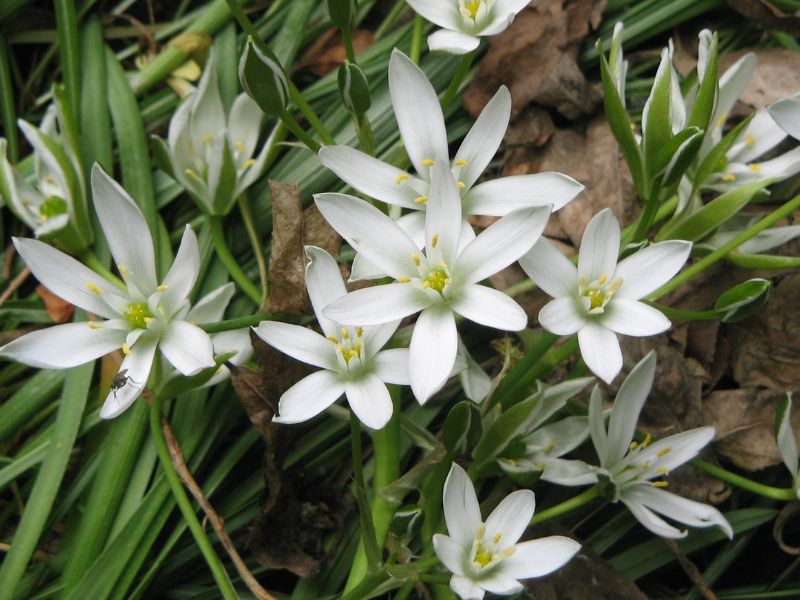
- Pollination
The flowers are insect pollinated, but may also be self-fertile, forming seeds in summer (June–July). Seed dispersal plays a relatively minor role in propagation, but accounts for isolated blooms.
- Toxicity
The plant, especially the bulb and flowers, contains cardiac glycosides, specifically convallatoxin and convalloside which are toxic to humans and livestock. Symptoms of poisoning include nausea, salivation, vomiting, diarrhea, and shortness of breath, as well as pain, burning, and swelling of lips, tongue, and throat. Prolonged contact may lead to skin irritation.
II. How to Grow and Care
Sunlight
Although it can grow in partial shade, Star of Bethlehem prefers a spot with full sun, meaning at least six hours of direct sunlight on most days. Its flowering will be better in full sun.
Temperature and Humidity
Star of Bethlehem is quite hardy to the temperature extremes of its growing zones (4 to 9). Humidity also typically isn’t an issue, as long as its soil moisture needs are met.
Watering
Young star of Bethlehem plants need regular watering to keep the soil evenly moist but not soggy. Mature plants have some tolerance for dry soil, but they still prefer a moderate amount of moisture. While the plant is actively growing in the spring and summer, water when the soil feels dry a couple inches down. When the plant is dormant, its moisture needs are diminished, and it typically doesn’t need any supplemental watering. Stop watering when the foliage begins to turn yellow after the flowers are spent.
Soil
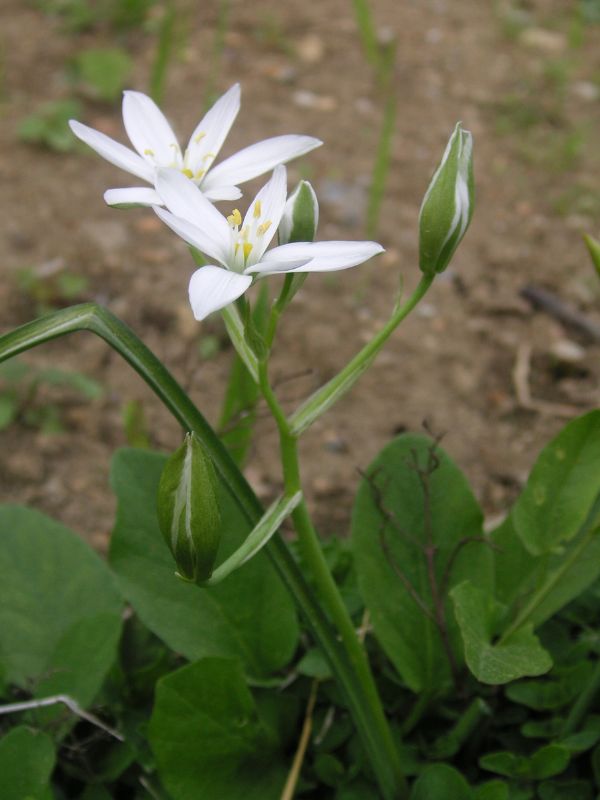
Star of Bethlehem likes loamy soil. Sharp soil drainage is key for healthy growth. In waterlogged soil, the bulbs can rot.
Fertilizing
As star-of-bethlehem prefers richly fertile soil, gardeners should compost this plant each spring to give it the necessary nutrients for growth. In addition, gardeners can supplement its growth during the planting process with a bone meal fertilizer or a fertilizer that contains equal parts phosphorus, nitrogen, and potassium.
Pruning
After the star of Bethlehem flowers finish blooming, you will be left with a mass of tangled foliage that isn’t particularly attractive. However, resist the urge to remove that foliage. As long as it stays green, it will be feeding the bulbs through photosynthesis.
Ultimately the leaves will turn brown and the plants will go dormant in the summertime, leaving gaps in your garden bed, at which time the foliage can be removed. Many gardeners opt to plug those gaps with annual plants, while others grow perennials next to their star of Bethlehem plants that will fill in the space as summer progresses.
Propagation
The bulbs will multiply prolifically over time, producing what are referred to as offsets or bulbils. Here’s how to propagate the plant:
- In late summer as the foliage is dying back, use a shovel or trowel to dig up the bulbs.
- Carefully separate the offset bulbs clinging to the parent bulb.
- Immediately replant the bulbils and parent bulbs about 3-6 inches deep and 4 inches apart in moist, loamy soil. The smallest bulbils may require a full two years before they are mature enough to bloom.
Overwintering
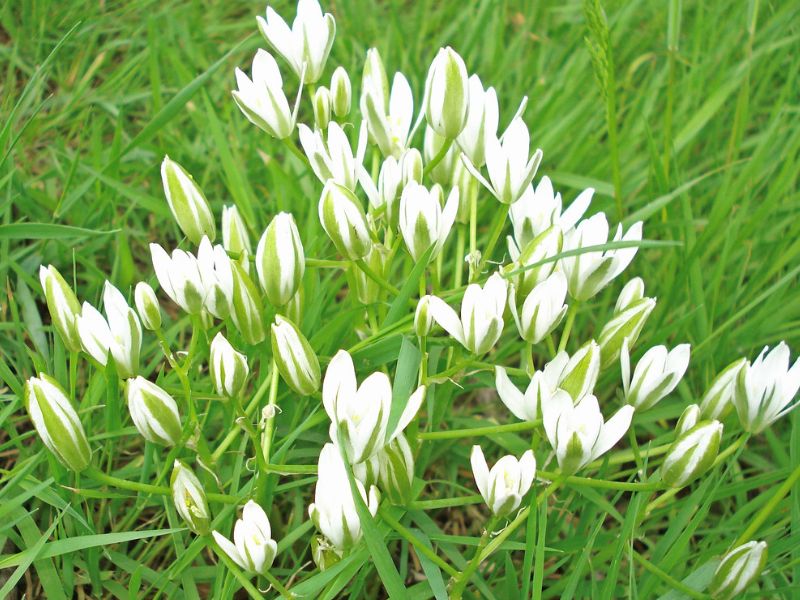
Mick E. Talbot
CC BY 2.0
Within its hardiness range (zones 4 to 9), star of Bethlehem is a sturdy plant that rarely succumbs to winter cold. However, gardeners in the northern part of zone 4 may want to protect plants in exposed locations with a layer of dry mulch over the winter. Avoid letting the bulbs soak in cold wet ground, as this can encourage bulb rot. The bulbs can also be dug up and stored in a protected space, such as a basement, in extremely cold areas.
Common Problems
The only significant problem with this plant is its eagerness to spread aggressively. Take care when planting it in a mixed garden bed, as it can take over the space and displace other garden plants. This plant is best used as an underplanting around rose bushes or sturdy shrubs, or in confined meadowy areas where there is no chance of its spread elsewhere.
Eliminating a colony takes some diligence, requiring that you carefully dig up the bulbs as you notice plants emerging in the spring. Because Star of Bethlehem also self-seeds so easily, you’ll also need to keep an eye out for tiny volunteers that can fuel a resurgence of a troublesome colony.
III. Uses and Benefits
- Ornamental uses
Garden star-of-bethlehem (Ornithogalum umbellatum) is a common wildflower, loved for its abundant and elegant white blooms. It makes a nice addition to coastal, cottage, and informal gardens. However, due to its weedy and invasive properties, it may be best to plant it in meadows and naturalized borders where it can be paired with other resilient and fast-spreading wildflowers. It can also be utilized on banks and slopes and makes for a great groundcover.
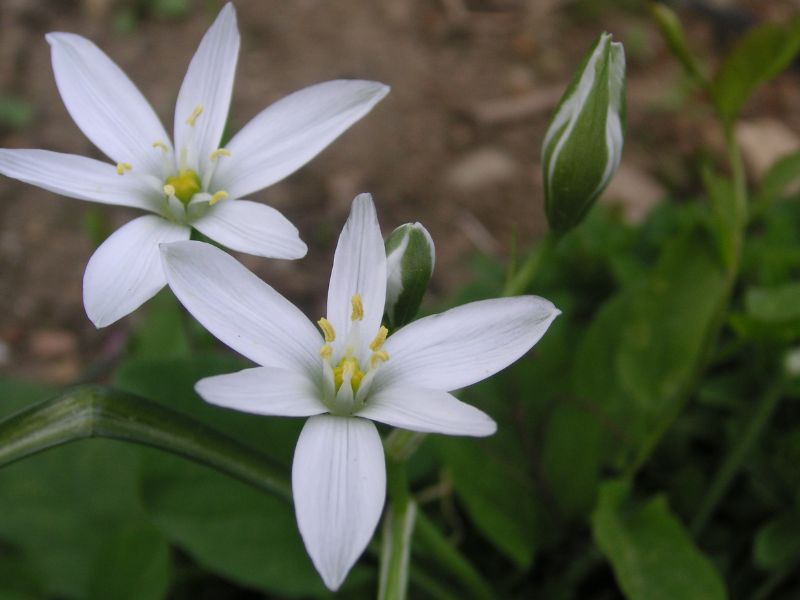
- Other uses
Despite the known toxicities, the plant has been described as edible for 2,000 years and incorporated into some traditional regional cuisines (e.g. Turkey) and traditional medicine (e.g. India). In Britain, the plant has long been the subject of herbals for its claimed culinary and medicinal properties. This includes drying and grinding the bulbs, or boiling them and baking the flowers into bread. Essences are sold as patent remedies and for aromatherapy, such as Bach flower remedies. Medical authorities advise against ingesting any part of the plant.
IV. Types of Ornithogalum
Star of Bethlehem does not have any named cultivars, but the Ornithogalum genus contains 200 other species similar to Star of Bethlehem flower. They include:
- O. arabicum: This plant bears white flowers and grows to around 19 inches tall. It’s hardy in zones 9 to 10.
- O. dubium: This species features orange flowers and reaches only around 10 inches tall. It grows in zones 7 to 10.
- O. nutans: This species grows to around 16 inches high and has white flowers with a lot of green in them. It grows in zones 6 to 10.
- O. thyrsoides: This species also has white flowers and grows to around 16 inches tall. It’s hardy in zones 7 to 10.
Find Where to Buy the Best Star of Bethlehem (Ornithogalum umbellatum)





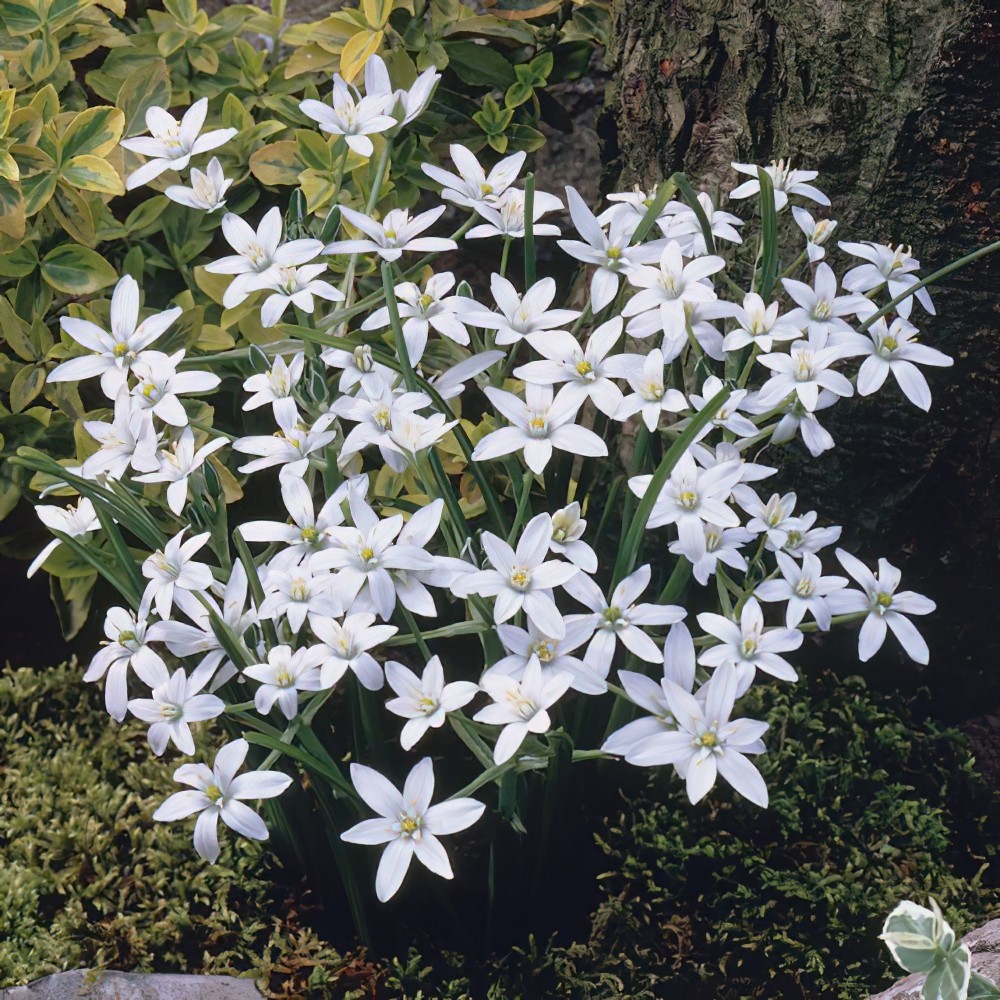












Leave a Reply